Understanding the Importance of a Center Drill for Precision Drilling

Drilling precision is essential in various industries, including manufacturing, construction, and electronics. To achieve accuracy and maintain the integrity of materials, it is crucial to use the right tools and techniques. One such tool that plays a significant role in precision drilling is the center drill.
A center drill is a specialized cutting tool designed to create a starting point for a larger drill or lathe. It features a conical point and a flat cutting edge, allowing for precise positioning and drilling. This drill is typically used to make a divot or pilot hole in a workpiece, ensuring that the larger drill bit or lathe’s centering process is accurate.
One of the main advantages of using a center drill is its ability to prevent drill wander. Drill wander occurs when a drill bit deviates from the desired drilling path, leading to inaccurate holes and potential damage to the workpiece. By using a center drill to create a starting point, drill wander can be minimized or eliminated, resulting in precise and well-centered holes.
Furthermore, the use of a center drill helps reduce the risk of chipping or breaking the workpiece.
Due to their cone-shaped point and cutting edge, center drills have a unique geometry that allows for smooth and controlled cutting. This minimizes the stress on the workpiece, preventing it from cracking or chipping during the drilling process. As a result, using a center drill significantly improves the overall quality and integrity of the drilled holes.
What is a Center Drill?
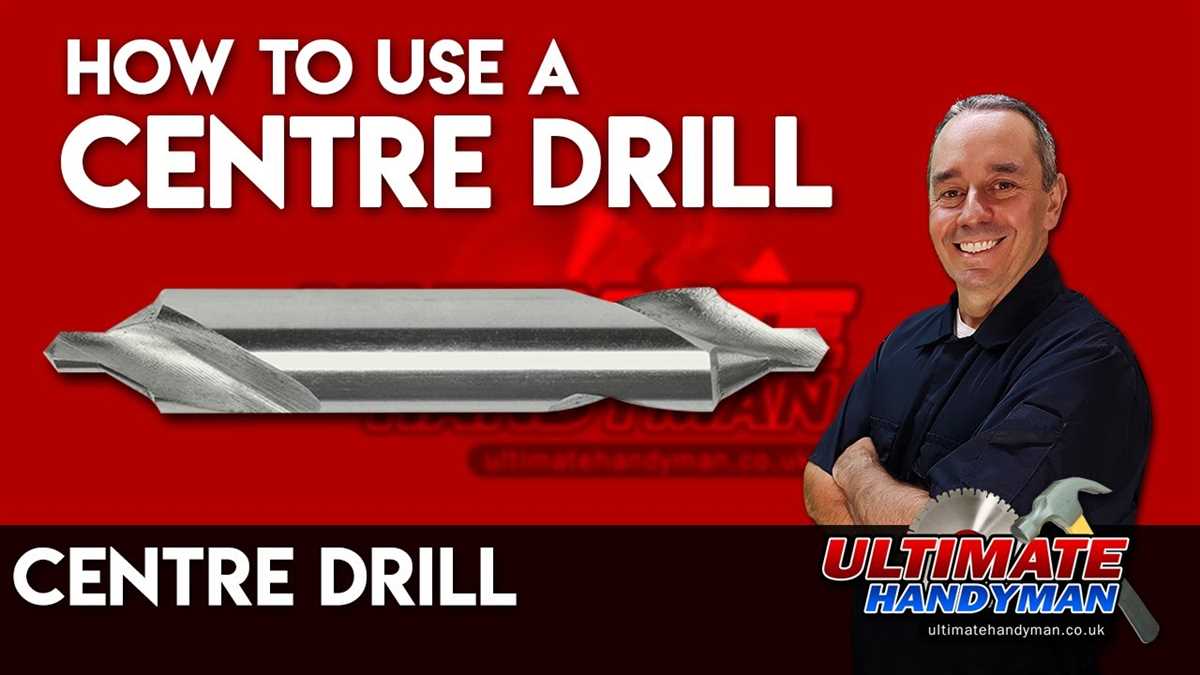
A center drill, also known as a spotting drill, is a tool used in metalworking to create a hole that serves as a starting point for a larger drill. It is designed to create a small conical hole in a workpiece, which provides a precise location for the larger drill to follow.
The center drill has a unique design that sets it apart from other drills. It features a short, rigid body with a pointed tip and a small, flat cutting edge. The body of the center drill is thicker than that of a regular drill, which provides additional stability and improves the accuracy of the hole.
Center drills are typically made from high-speed steel (HSS) or carbide materials, which allows them to withstand the high-speed and high-heat conditions of drilling.
Functions of a Center Drill
A center drill serves several important functions:
- Creating an Indentation: The primary function of a center drill is to create a small indentation or pilot hole in the workpiece. This indentation acts as a guide for the larger drill, ensuring that it starts drilling at the desired location.
- Improving Accuracy: By starting drilling at a precise location, a center drill helps improve the accuracy of the hole. This is crucial in applications where precise hole placement is required, such as in machining operations.
- Preventing Wander: When drilling without a center drill, the larger drill bit can wander or drift off-center, leading to inaccuracies. The center drill’s conical shape prevents this wandering, ensuring that the larger drill stays on track.
- Clearing Chips: Center drills have small flutes or grooves along their body, which helps clear away chips and debris generated during drilling. This helps prevent clogging and promotes smooth drilling operations.
Types of Center Drills
There are several types of center drills available, each designed for specific applications:
- Standard Center Drills: These center drills have a 60-degree tip angle and are suitable for most drilling applications.
- Bell Center Drills: Bell center drills have a rounded tip and are used for countersinking holes.
- Combined Drill and Countersink: These center drills have both a drill and a countersink feature, allowing for efficient drilling and countersinking in a single operation.
Conclusion
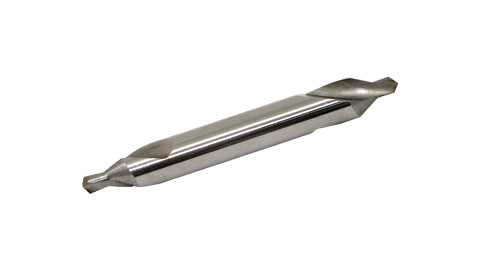
A center drill is a crucial tool in metalworking, providing a precise starting point for drilling operations. It helps improve accuracy, prevent wandering, and clear away debris, ensuring smooth and precise drilling. By understanding the importance of a center drill, manufacturers can achieve better precision and efficiency in their drilling processes.
Benefits of Using a Center Drill
A center drill is a type of cutting tool that is commonly used in precision drilling operations. It has a number of benefits that make it an essential tool in many machining processes. Here are some of the benefits of using a center drill:
1. Improved Accuracy
A center drill is designed to create a small pilot hole or center point on a workpiece, which serves as a reference point for subsequent drilling operations. This precision drilling technique improves accuracy by ensuring that the drill bit starts in the exact center of the desired hole. This is particularly important when drilling into hard materials or when precise positioning is required.
2. Reduces Drilling Forces
When drilling a hole, the cutting forces can cause the drill bit to wander or move off course. By using a center drill to create a pilot hole, the cutting forces are reduced, resulting in better control over the drilling process. This can help prevent the drill bit from breaking or getting stuck in the workpiece, and also reduces the chances of damaging the workpiece.
3. Supports Different Drill Bits
A center drill is typically used as a precursor to using a larger drill bit. It prepares the workpiece by creating a small recess or center hole, which allows the larger drill bit to easily start drilling without slipping or wandering. This makes it easier to transition to larger drill bits and prevents damage to the workpiece by ensuring proper alignment.
4. Versatility
Center drills can be used in a wide range of materials, including metals, plastics, and wood. They are available in various sizes and designs to accommodate different drilling requirements. This versatility makes center drills suitable for a variety of applications, from woodworking to metalworking.
5. Long Tool Life
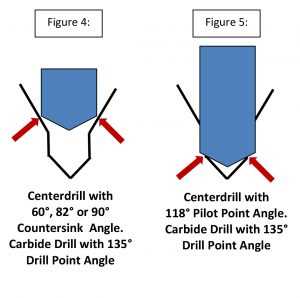
Using a center drill can help extend the tool life of subsequent drill bits. By creating a pilot hole, the center drill reduces the amount of material that the larger drill bit needs to remove. This reduces the heat and friction generated during the drilling process, which can lead to longer tool life and better overall drilling performance.
Conclusion
In conclusion, using a center drill offers several benefits, including improved accuracy, reduced drilling forces, support for different drill bits, versatility, and long tool life. Whether you are a professional machinist or an avid DIYer, having a center drill in your toolbox can greatly enhance the precision and efficiency of your drilling operations.
Improved Accuracy
The use of a center drill significantly improves the accuracy of drilling operations. The center drill, also known as a spotting drill, is specifically designed to create a starting point for drilling operations. It creates a small, shallow hole that acts as a guide for the subsequent drill bit.
By using a center drill, the operator can ensure that the hole is drilled in the desired location with precision. The center drill creates a conical-shaped recess that provides a stable and accurate starting point for the drill bit. This helps to prevent the drill bit from wandering or drifting off course, resulting in a more accurate hole.
Furthermore, the use of a center drill helps to eliminate the need for additional alignment and setup steps. Without the center drill, the operator would need to use other methods to mark the starting point, such as a punch or a divot. These methods can be less accurate and may require additional steps to ensure proper alignment.
In addition to improving accuracy, using a center drill also helps to prolong the life of the drill bit. By providing a precise starting point, the center drill reduces the amount of lateral force and heat generated during drilling. This can help to prevent the drill bit from becoming dull or breaking prematurely, saving time and money on replacement bits.
In summary, the use of a center drill is crucial for achieving improved accuracy in drilling operations. It creates a precise starting point, eliminates the need for additional alignment steps, and helps to prolong the life of the drill bit. By investing in a center drill and incorporating it into drilling processes, operators can ensure that their drilling operations are accurate and efficient.
Reduced Drilling Forces
One of the key benefits of using a center drill is the reduction in drilling forces. When drilling a hole without a center drill, the cutting tool must perform the task of both centering and drilling. This can result in higher forces acting on the cutting tool, leading to increased wear and tear.
By using a center drill, the initial hole is created with a smaller diameter, allowing for better accuracy and alignment with the desired drilling point. This means that when the main drill bit is introduced, it can simply follow the pilot hole created by the center drill, resulting in reduced cutting forces.
The reduced drilling forces have several advantages. Firstly, it helps to prolong the tool life of the cutting tool, as less wear and tear is experienced during the drilling process. This is particularly important when working with expensive or specialized drill bits.
Secondly, the reduced forces make drilling easier and more efficient. The operator can exert less force when operating the machine, resulting in improved control over the drilling operation. This can help to prevent the drill bit from slipping or wandering off course, resulting in more accurate holes.
Finally, the reduced drilling forces can also result in improved surface finish. With less force acting on the cutting edges of the drill bit, there is less likelihood of chattering or vibrations occurring during the drilling process. This can result in a cleaner and smoother hole surface, particularly when drilling into materials such as metal or plastic.
In summary, using a center drill can significantly reduce drilling forces, resulting in benefits such as prolonged tool life, improved drilling efficiency, and better surface finish. It is a simple yet effective tool that should not be overlooked when aiming for precision drilling.
Enhanced Hole Quality
The use of a center drill in precision drilling operations can greatly enhance the quality of the holes produced. A center drill is designed to create a starting point or center hole for a subsequent drilling operation. By creating a small pilot hole, the center drill ensures that the larger drill bit follows the desired path and maintains accuracy throughout the drilling process. This results in a higher quality finished hole with improved dimensional accuracy.
Benefits of using a center drill for enhanced hole quality:
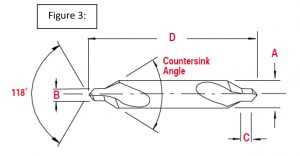
- Improved Alignment: The center drill creates a precise starting point for the larger drill bit, ensuring that the subsequent hole is centered and aligned properly. This eliminates the risk of the drill bit wandering or deviating from the desired path, resulting in a straighter and more accurate hole.
- Reduced Chatter and Vibration: By creating a pilot hole, the center drill helps to reduce chatter and vibration during the drilling process. This leads to a smoother and more controlled drilling operation, resulting in a cleaner and more precise hole.
- Enhanced Surface Finish: The use of a center drill helps to minimize burrs and surface imperfections in the finished hole. By creating a clean starting point, the center drill reduces the chance of the larger drill bit causing damage or leaving rough edges. This results in a smoother and more polished surface finish.
Tips for achieving enhanced hole quality with a center drill:
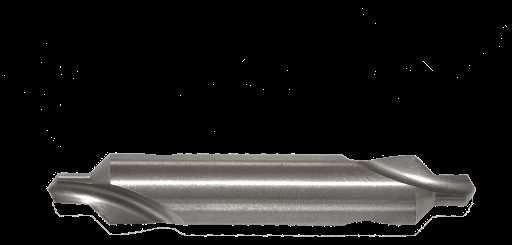
- Proper Selection and Setup: Choose the appropriate size and geometry of the center drill for the drilling operation, and ensure that it is securely mounted in the drill press or machine. This will help to achieve optimal performance and accuracy.
- Correct Feed and Speed: Use the recommended feed and speed settings for the center drill to prevent overheating and premature tool wear. This will help to maintain consistent cutting performance and maximize hole quality.
- Regular Inspection and Maintenance: Inspect the center drill regularly for signs of wear or damage, and replace it as needed. Dull or damaged center drills can negatively impact hole quality and accuracy.
In conclusion, using a center drill in precision drilling operations can significantly enhance the quality of the holes produced. By providing a precise starting point and maintaining accuracy throughout the drilling process, a center drill improves alignment, reduces chatter and vibration, and enhances the surface finish of the holes. By following the tips mentioned above, operators can maximize the benefits of using a center drill and achieve enhanced hole quality in their drilling operations.
Types of Center Drills
Center drills are available in various types, each designed for a specific purpose. Here are some common types of center drills:
| Type | Features |
|---|---|
| Regular Center Drill | These center drills have a two-ended design, with a pointed end and a smaller flat end. They are commonly used for creating a small starting point for a drill bit. |
| Bell Center Drill | Bell center drills have a countersink at one end, which helps in chamfering the hole. They are often used for creating a 90-degree countersink in a workpiece. |
| Radian Center Drill | Radian center drills have a conical shape with a larger included angle. They are used for drilling larger diameter holes and provide better stability. |
| Combined Drill and Countersink | These center drills have a combined drill and countersink feature, making them ideal for drilling and countersinking in one operation. They save time and effort. |
| Spotting Drill | Spotting drills have a larger point angle and shorter length, which helps in precisely locating the center of the hole. They are commonly used in metalworking applications. |
Choosing the right type of center drill depends on the specific drilling application and desired results. It is important to select a center drill that matches the material, drill bit size, and hole specifications to achieve accurate and precise drilling.
Standard Center Drills
A standard center drill, or spotting drill, is a type of drill bit that is used to create a starting hole or “center” for a larger drill bit. It has a short, stiff body with a sharp point and a pilot hole at the center. This pilot hole allows the larger drill bit to accurately locate and guide itself into the workpiece.
The pilot hole in the center drill is usually smaller than the diameter of the larger drill bit that will be used. This ensures that the larger drill bit starts drilling in the correct position and prevents it from wandering or drifting off course. By creating a precise starting point, the center drill helps to improve the accuracy and quality of the final drilled hole.
Standard center drills are available in various sizes and materials, including high-speed steel (HSS) and carbide. HSS center drills are commonly used for general-purpose drilling, while carbide center drills are preferred for drilling harder materials.
Most center drills have two flutes that help to remove chips and debris from the hole. The flutes also provide additional rigidity to the drill bit, allowing it to withstand higher drilling forces. Some center drills may have more than two flutes, which further enhances their cutting performance and chip evacuation capabilities.
When using a standard center drill, it is important to properly align and secure the workpiece to ensure accurate drilling. The drill should be held perpendicular to the workpiece surface to prevent any angled or off-center holes. Additionally, the drill should be operated at the correct speed and feed rate to prevent overheating or premature wear of the drill bit.
In summary, standard center drills are essential tools for precision drilling. They create a starting point or “center” for larger drill bits, improve drilling accuracy, and help prevent wandering or off-center holes. By using a center drill, you can ensure that your drilled holes are precise, accurate, and of high quality.
Bell Type Center Drills
Bell type center drills are a type of center drill that is commonly used in precision drilling applications. These center drills are characterized by their unique shape, which resembles a bell or trumpet. They are designed to provide a precise starting point for drilling operations, ensuring that the drill bit remains centered and aligned throughout the drilling process.
The bell type center drill consists of a conical tip with a small pilot hole at the center. This pilot hole serves as a guide for the drill bit, allowing it to penetrate the workpiece accurately. The conical shape of the drill helps to prevent the drill bit from wandering or slipping off center. This is especially important when drilling into hard or difficult-to-machine materials, where accuracy is crucial.
One of the key advantages of bell type center drills is their versatility. They can be used with a variety of materials, including metals, plastics, and composites. The conical shape of the drill also allows for easy chip evacuation, preventing the buildup of chips and debris that can lead to poor drilling performance.
Benefits of Using Bell Type Center Drills
- Precision: Bell type center drills provide a precise starting point for drilling, ensuring accurate hole placement and alignment.
- Reduced Drilling Forces: The conical shape of the drill helps to reduce drilling forces, resulting in smoother and more efficient drilling operations.
- Improved Hole Quality: By providing a centered and aligned starting point, bell type center drills help to produce clean and accurate holes with minimal burrs or defects.
- Time and Cost Savings: The use of bell type center drills can help to reduce the need for secondary operations, such as reaming or deburring, resulting in time and cost savings.
Applications of Bell Type Center Drills
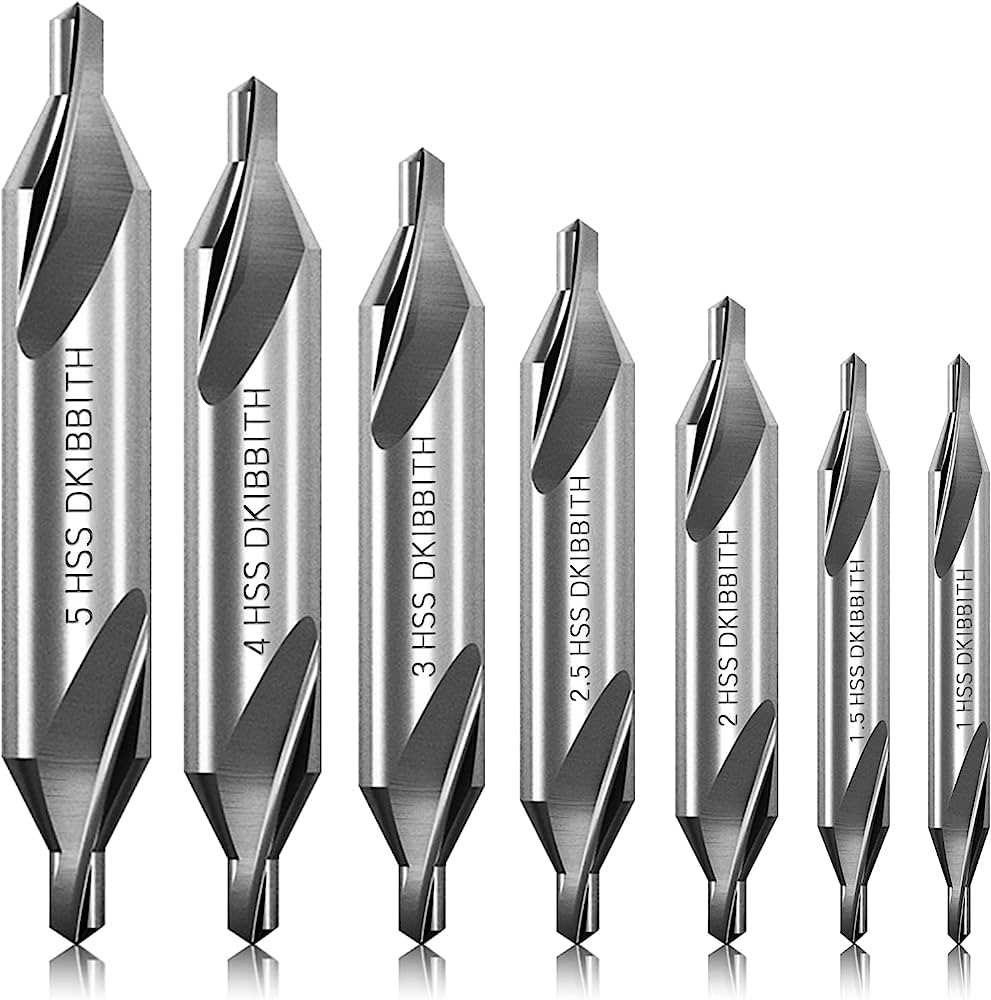
Bell type center drills are commonly used in precision drilling applications, such as:
- Machining centers
- Lathe operations
- Drilling jigs and fixtures
- Tool and die making
- Automotive manufacturing
- Aerospace industry
Overall, the use of bell type center drills can greatly improve drilling accuracy and efficiency, making them an essential tool for any precision drilling operation.
Factors to Consider When Selecting a Center Drill
When selecting a center drill for precision drilling, there are several factors that you should consider. These factors will help ensure that you choose the right tool for the job and achieve accurate results.
Diameter
The diameter of the center drill is an important factor to consider. It should match the size of the hole you intend to drill or the size of the pilot hole you need to create. Using the wrong diameter of the center drill can lead to inaccuracies and poor hole quality.
Material
Consider the material you will be drilling into when selecting a center drill. Different materials require different types of drills. For example, a carbide center drill is better suited for drilling into harder materials like steel, while a high-speed steel center drill is more appropriate for softer materials like wood or plastic.
Length
The length of the center drill is another important factor to consider. It should be long enough to reach the desired depth without causing any interference with the workpiece or the drilling equipment. At the same time, it should not be unnecessarily long as it can affect the stability and accuracy of the drilling process.
Point Angle
The point angle of the center drill determines the shape and size of the hole it creates. Different point angles are suitable for different applications. For example, a 60-degree point angle is commonly used for drilling center holes for lathe centers, while a 90-degree point angle is often used for drilling starting holes for larger drills.
Quality and Brand
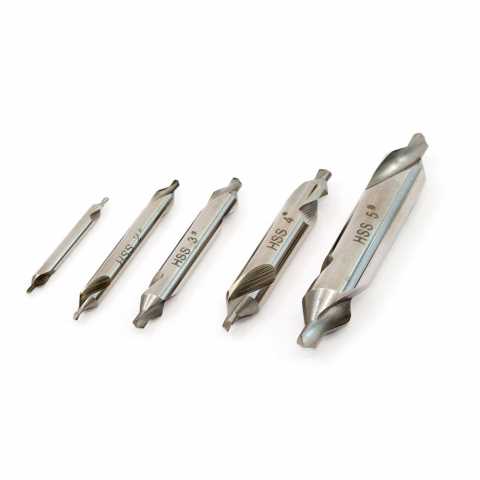
Lastly, consider the quality and brand of the center drill. Investing in a high-quality drill from a reputable brand can ensure better performance, longevity, and accuracy. Cheap and low-quality drills may not provide the same level of precision or durability, ultimately leading to poor results and possible damage to the workpiece or equipment.
By considering these factors when selecting a center drill, you can ensure that you choose the right tool for the job and achieve accurate and precise drilling results.
Material
The material used in the center drill is an important factor in achieving precision drilling. The center drill is typically made from high-speed steel (HSS) or solid carbide. Both materials have their own advantages and are chosen based on the specific drilling requirements.
- High-speed Steel (HSS):
- Solid Carbide:
HSS center drills are one of the most commonly used types. They are made from a type of tool steel that contains tungsten, chromium, vanadium, and other elements. HSS drills are known for their durability and can withstand high temperatures and cutting speeds. They are suitable for drilling a wide range of materials, including carbon steel, alloy steel, cast iron, and non-ferrous metals.
Solid carbide center drills are made from a combination of tungsten carbide and cobalt. They are extremely hard and are capable of providing superior performance in terms of wear resistance and strength. Solid carbide drills can withstand higher cutting speeds than HSS drills, making them suitable for drilling hard materials like hardened steels, stainless steels, and high-temperature alloys. They are also known for their ability to produce finer finishes and tighter tolerances.
Choosing the right material for the center drill depends on factors such as the material being drilled, the required precision, and the expected cutting conditions. It is important to consider these factors to ensure optimal drilling performance and accuracy.
FAQ:
Why is a center drill important for precision drilling?
A center drill is crucial for precision drilling because it creates an indention or center point on a workpiece, which helps in ensuring accurate hole placement.
What are the advantages of using a center drill?
Using a center drill offers several advantages. It provides better hole accuracy, reduces the chance of the drill bit wandering, and improves the overall stability of the drilling process.
What materials can be drilled using a center drill?
A center drill can be used to drill various materials, including metal, wood, plastic, and composite materials. Its design allows for effective drilling in different types of materials.
What is the difference between a center drill and a regular drill bit?
The main difference between a center drill and a regular drill bit is their purpose. A center drill is specifically designed to create an indention or center point, while a regular drill bit is used for drilling holes of specific sizes.
Can a center drill be used for larger diameter holes?
No, a center drill is not suitable for drilling larger diameter holes. It is primarily used for creating a center point or indention, and drilling smaller pilot holes.
Video:











